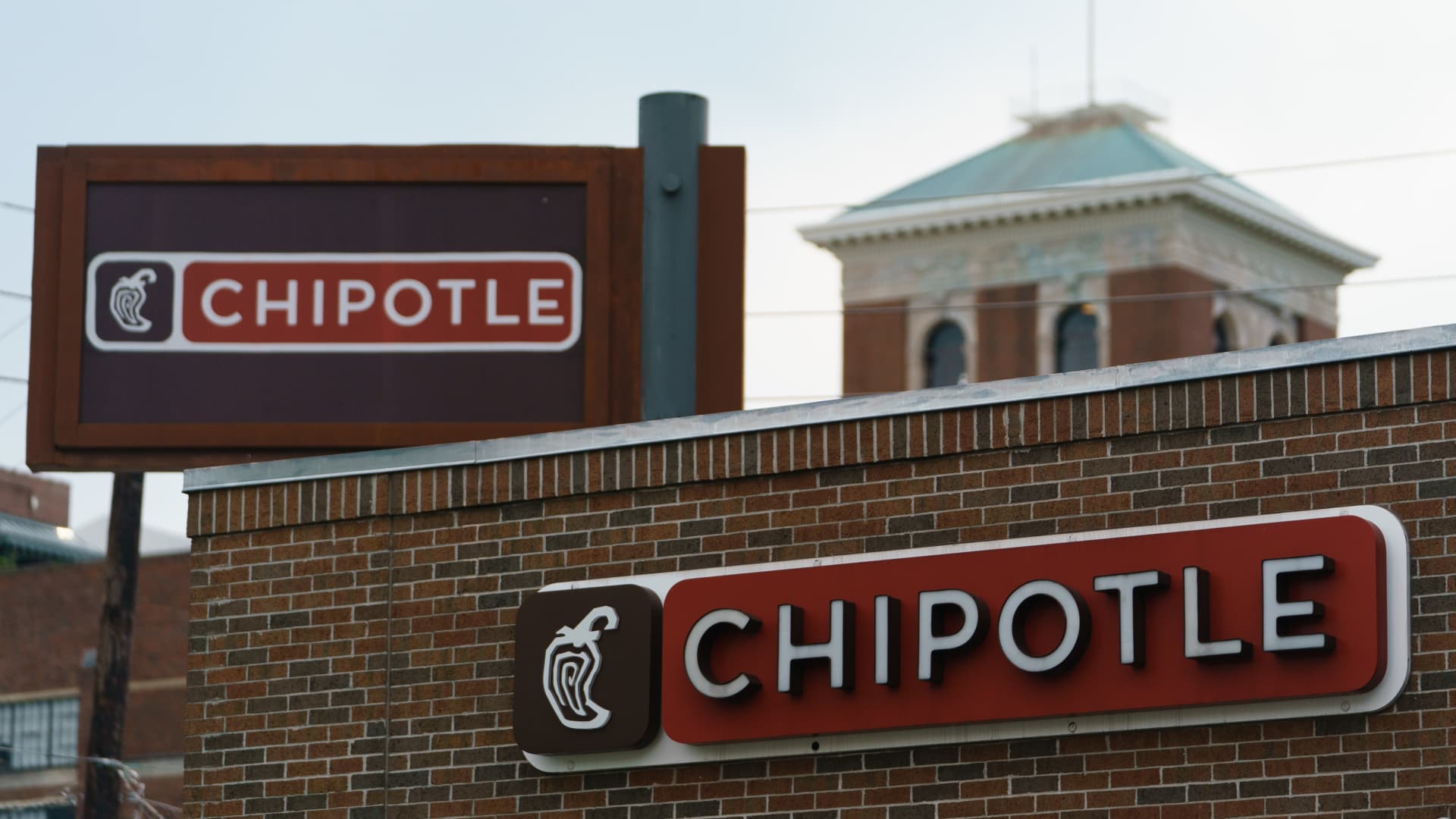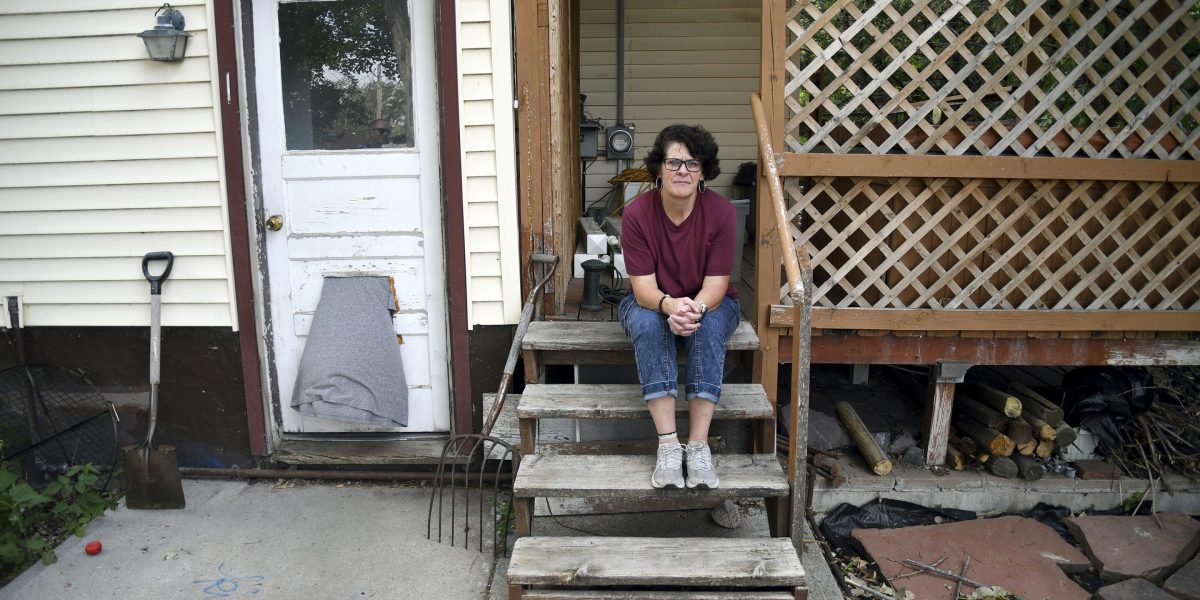Bloomberg | Bloomberg | Getty Images
Bennington, population 15,000, is known for its fall foliage, lush Green Mountain backdrop, and laid-back Vermont vibe. There’s no major university here (Bennington College has over 700 undergraduates and calls its namesake town home) and the nearest interstate highway is 40 miles away. But none of that deterred Chipotle, long a staple of the suburbs, airports, and interstates, from opening in this small Vermont town last month.
Stuart Hurd has been town manager for 32 years. While lamenting the loss of the family-owned eateries that once served bustling crowds downtown, he cheers the arrival of Chipotle.
“It is a feather in our cap; it is good for the whole community,” Hurd said, adding that a Starbucks is opening soon next to Chipotle, which opened its doors in July. These restaurants are helping to fill a void in Bennington.
“Most of the old family restaurants have gone away. They have aged out. Their kids don’t want to do that kind of work,” Hurd said, noting that downtown Bennington used to have three good family restaurants. “But they are gone, and that kind of restaurant doesn’t seem to come back,” he added.
The same scene is repeating itself in small town after small town (which Chipotle identifies as a municipality under 20,000 residents)
Like Bennington, Somerset, Pennsylvania, population 15,000, recently welcomed its first Chipotle to town with a ribbon cutting, balloons, and local dignitaries.
Aggressive fast-casual expansion strategy
Chipotle has been among the most aggressive of the “fast casual” chains in opening stores in towns that once would typically have been home to just a Subway or a burger franchise tucked inside a gas station. However, the reasons for Chipotle’s small-town expansion have as much to do with changing food tastes as economics, experts say. Burger and fries have long been a staple of small towns, but now small-town diners are increasingly searching for what they consider healthier options.
“In general, people’s eating habits and understanding of what is good for them have evolved towards real, unprocessed foods, not fried things,” said Chipotle’s chief brand officer, Chris Brandt.
Other fast-casual chains like Sweetgreen and Cava are attempting to use the Chipotle’s playbook, but Eric Gonzalez, restaurants analyst at KeyBanc Capital Markets, says other chains will have difficulty replicating the small-town success.
“There are some things that make Chipotle unique,” Gonzalez said. There is widespread acceptance and appetite for Chipotle’s cuisine; its size gives it the scale to keep price points down — the price of a meal at Chipotle is comparable to that of one of the big fast-food chains. And its “Chipotlane” — digital order pickup store format — provides another source of revenue.
“The Chipotlane unlocks those small towns for them,” Gonzalez said. He also says that cheaper land and labor in small towns mean lower expenses that often offset what may be lesser earnings than suburban counterparts.
“A brand like Cava might have a little more trouble,” Gonzalez said, since people aren’t as familiar with the Mediterranean-style fare it is selling. But Cava is trying to do what Chipotle did for south-of-the-border food for the Mediterranean category. With over 300 restaurants, Cava is bringing its Mediterranean menu to small towns for the same reasons as Chipotle, and it says that given time, the restaurant will achieve the same acceptance for Mediterranean cuisine as Mexican.
“These markets were underserved to begin with, as people are craving more interesting food and becoming more educated about what they eat and a growing understanding of what they consume and how it affects their health,” said Brett Schulman, co-founder and CEO of Cava.

The trend has prompted Cava to locate its stores in smaller markets like Lancaster, Pennsylvania, and Lynchburg, Virginia. But Schulman says there’s plenty of room for Cava to grow and scale up to locate in even smaller towns in the future, and he added that comparing Cava to Chipotle is imperfect, pointing out the disparity in the number of restaurants and years in existence. (Cava opened its first fast-casual chain in 2011, and compared to its 300 restaurants, Chipotle, which was founded in the 1990s, now has over 3,500 locations).
Meanwhile, Chipotle’s Brandt says not all small towns are equal. Whether a small town is a workable location for Chipotle depends on income and other intangibles.
“We look for proximity to the interstate and whether it is a hub of commerce in the area,” Brandt said, adding that there may be bigger towns nearby, but if they don’t have a Walmart or a Target to coattail traffic off of, it’s not as desirable. “We like to be in a town with all the stores.” Bennington fits that bill with a Walmart Supercenter and Home Depot, to name a few of the retail giants in town. “Small towns that have a college are also a great fit,” he added.
Chipotle’s recently opened location in Bennington, Vermont.
Chipotle
Brandt says that Chipotle still has plenty of room to grow in small towns across the U.S. Chipotle plans to open another 3,500 stores over the years ahead, with a sizable percentage located in small towns.
“We look for places where we can be differentiated, and we look for food deserts where we have a community that wants what we have,” he said.
The pandemic effect on local restaurants
Mike Esposito, co-managing partner at Franchise Equity Partners, a private investment firm that creates long-term partnerships with franchisee operators, has noticed the trend of popular fast-casual restaurants coming to small towns and says a convergence of factors is responsible.
“The U.S. has experienced general saturation of restaurant concepts, particularly within large chains searching for incremental growth avenues,” Esposito said. But while the cities and suburbs are saturated with restaurants, Covid dealt a blow to independent restaurants and small chains that were already struggling, leaving a void for better-capitalized (think Chipotle) chains to move in, while ones that haven’t moved in are viewing small markets favorably.
“These chains now see ‘whitespace’ for development in smaller markets to fill the gap left by Covid closures,” Esposito said.
Panda Express, a mainstay of malls and airports, is setting up shop in smaller cities, too. Last month, it opened in Auburn, Indiana, which has a population of 12,000, although Interstate 69 runs right by the town.
“Our focus for the next few years is to grow in under-penetrated markets, many of which are small towns across the U.S.,” said Fabiola Del Rio, a spokeswoman for Panda Group, which owns Panda Express. The chain has approximately 2,500 outlets in the U.S.
While Cava is introducing small-town America to tahini and tzatziki, Panda Express has the advantage of people already being generally familiar with General Tso’s Chicken and egg rolls.
Del Rio says that many of the larger urban and suburban areas have become saturated and that smaller towns allow for a different level of service. “The untapped potential in smaller towns allows us to introduce our American Chinese comfort food to new audiences who may not have had easy access to our offerings before,” she said.
But smaller towns also present a set of risks different from larger cities for established brands like Panda Express. While strong Panda Express brand recognition in metropolitan areas is an advantage, she said there is need for increased community engagement in smaller towns. The chain prioritizes outreach and engagement with local chambers of commerce and philanthropic organizations. “We can engage with our guests on a more personal level, understand their preferences, and tailor our community-based programs to meet their needs,” Del Rio said.
In Bennington, Hurd wonders what other big names might come next? But, at least for now, the residents are enjoying their chips and guac. And if Cava has its way, more residents in small towns will be ordering mezze salad and harissa avocado in the near future.















